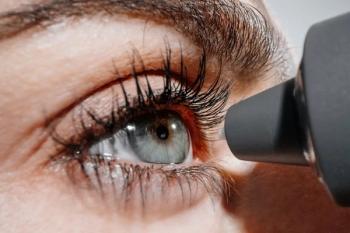
AAOpt 2024: Eye care provider and patient satisfaction with lifitegrast
Eye care practitioners reported moderate to high satisfaction with lifitegrast's ability to improve signs of dry eye, according to Melissa Barnett, OD, FAAO, FSLS.
Melissa Barnett, OD, FAAO, FSLS, discussed a real-world study on eye care professional and patient satisfaction with the dry eye treatment lifitegrast (Xiidra) at this year's American Academy of Optometry meeting. The study had a retrospective cross-sectional design and surveyed 12 eye care practitioners, including 6 ophthalmologists and 6 optometrists, about their experiences prescribing lifitegrast to an average of 1288 patients with dry eye disease. The key findings were:
- On average, 21% of dry eye patients seen by ophthalmologists and 17% of those seen by optometrists were treated with lifitegrast.
- Eye care practitioners reported moderate to high satisfaction with lifitegrast's ability to improve signs of dry eye, such as increased tear film breakup time, reduced corneal and conjunctival staining, and increased tear meniscus height.
- Practitioners also reported moderate to high satisfaction with lifitegrast's ability to improve dry eye symptoms like itching, dryness, burning/stinging, redness, pain, light sensitivity, and blurred vision.
- 58% of practitioners said at least one patient experienced mild to moderate adverse effects like blurred vision, burning/stinging, and dysgeusia (taste disturbance).
- Overall, the majority of practitioners (over 50%) were either moderately or very satisfied with lifitegrast for treating their dry eye patients.
The key takeaways highlighted were the high prevalence of dry eye disease, the importance of evaluating and addressing dry eye in all patients, and the practical benefits of having an effective and well-tolerated treatment option like lifitegrast available. The study demonstrates that lifitegrast can provide meaningful improvements in both signs and symptoms of dry eye in real-world clinical practice.
Newsletter
Want more insights like this? Subscribe to Optometry Times and get clinical pearls and practice tips delivered straight to your inbox.



















































.png)


